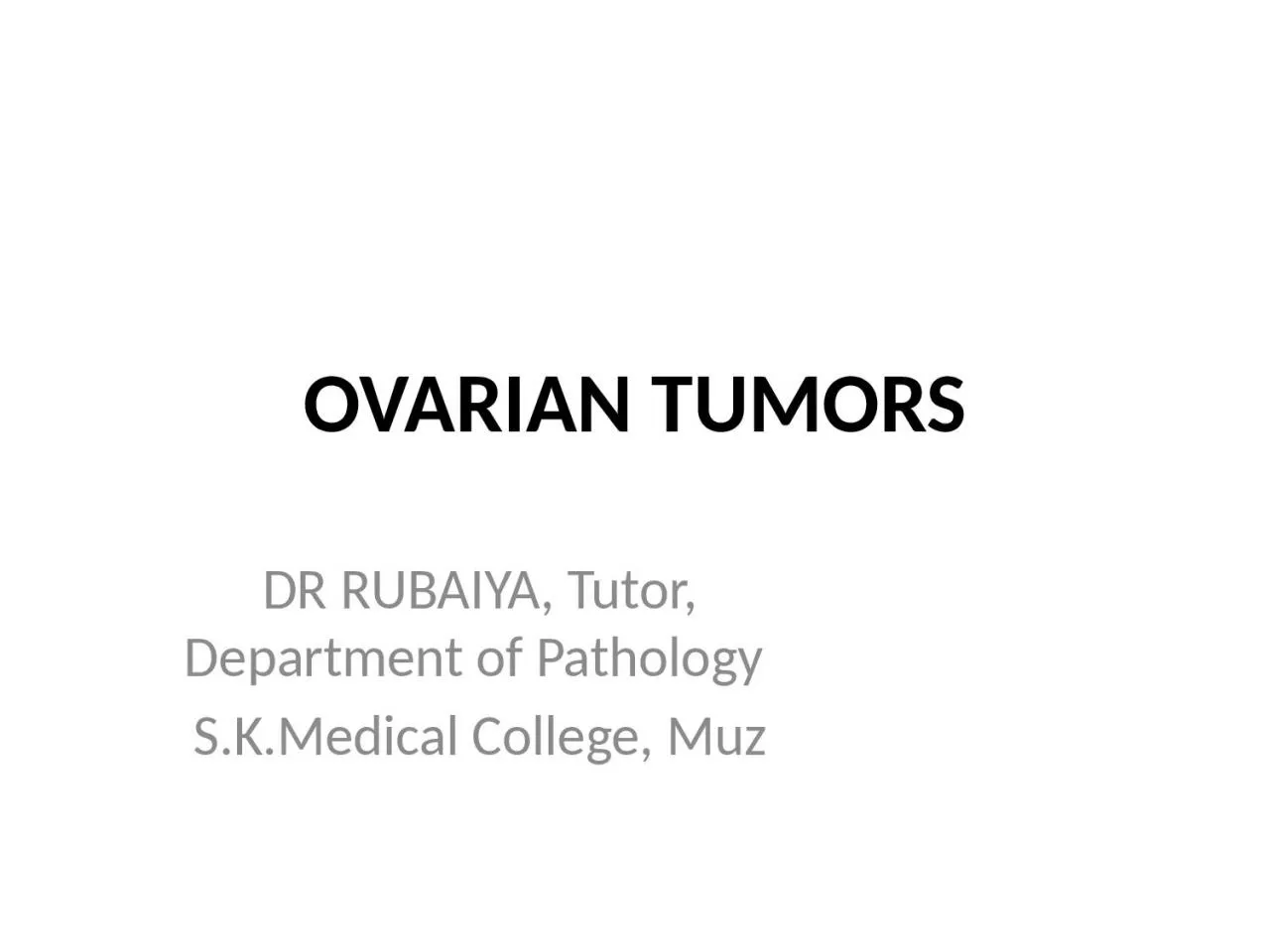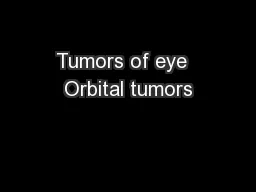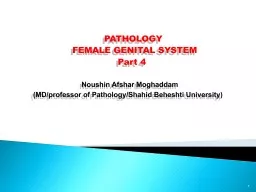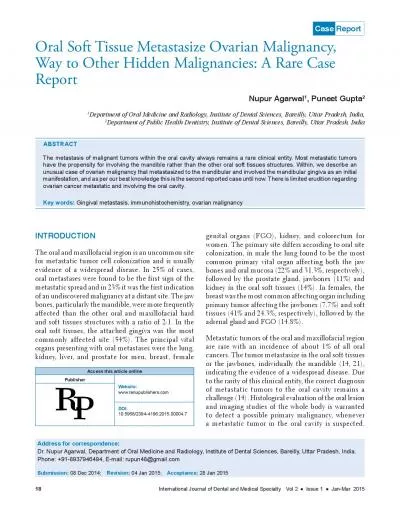PPT-OVARIAN TUMORS DR RUBAIYA, Tutor, Department of Pathology
Author : luna | Published Date : 2024-01-13
SKMedical College Muz Ovarian tumors 80 are benign occuring mostly in young women between the ages of 20 and 45 years Borderline tumors occur at slightly older
Presentation Embed Code
Download Presentation
Download Presentation The PPT/PDF document "OVARIAN TUMORS DR RUBAIYA, Tutor, Depar..." is the property of its rightful owner. Permission is granted to download and print the materials on this website for personal, non-commercial use only, and to display it on your personal computer provided you do not modify the materials and that you retain all copyright notices contained in the materials. By downloading content from our website, you accept the terms of this agreement.
OVARIAN TUMORS DR RUBAIYA, Tutor, Department of Pathology: Transcript
Download Rules Of Document
"OVARIAN TUMORS DR RUBAIYA, Tutor, Department of Pathology"The content belongs to its owner. You may download and print it for personal use, without modification, and keep all copyright notices. By downloading, you agree to these terms.
Related Documents














